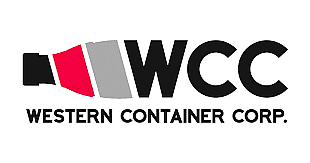Three Common Challenges of Comprehensive Cathodic Protection Design
Infrastructure and asset management are crucial to systems of all kinds. Companies with pipelines and tanks of all shapes and sizes want reliable systems that can transport fluids and other materials from point A to point B effectively and efficiently, without the risk of leaks or, even worse, explosions.
Whenever these systems have corrosion eating away at the infrastructure, you risk serious downtime. Such slowing of productivity not only takes a big cut of your financial well-being, but can lead to serious issues down the line for end users. Even in a closed system, you have employees and structural damage to worry about.
The better choice is to have experience and well-engineered cathodic protection design that takes into account the necessary construction, oversight, and testing needed for a safe and reliable system. Our team at Dreiym Engineering follows current best practices from the National Association of Corrosion Engineers (NACE), but want to give you a brief overview of some of the more common issues we see popping up with clients.
What is Cathodic Protection?
Before we get too deep into cathodic protection troubleshooting, we should cover the basics first. Cathodic protection (CP) is a unique method designed to prevent the corrosion of metal surfaces in systems using pipelines, storage tanks, or even marine structures. These systems are commonly found underground, but plenty of clients in natural gas or oil have them above ground as well.
It works by changing the metal structures so they effectively function as cathodes in an electrochemical circuit. This reduces the potential risk of oxidation (which leads to corrosion) and extends the life of your infrastructure. In the end, you save money and lower operational risk.
This is kind of like having a special buddy attached to your favorite bike growing up. You connect that buddy via a wire. Instead of rust wanting to get to the bike’s metal, it goes to the buddy instead – eating up the rust and acting as a shield. That is a fairly simple example, but you get the idea.
The Critical Importance of Cathodic Protection
Cathodic protection design is crucial to a company’s infrastructure. The market for this industry is growing at such a rapid rate because of high adoption numbers that it is expected to increase the CAGR by 5.14% from now until 2033.
The reason for such popularity in application is because of the preservation of crucial systems. When you lessen the chance of corrosion, you drastically improve safety standards around your assets. Suddenly, businesses from water treatment facilities to crucial pipelines don’t have to spend so much time worried about safeguards.
In turn, neither do the general public and environmental regulators. They get to enjoy a more profound sense of relief because they know your cathodic protection troubleshooting will lead to a safer, more efficient system.
Cathodic Protection Troubleshooting vs. Function Testing
It is important to note that as you consider introducing cathodic protection design into your facility, you also understand the difference between function testing and troubleshooting. At Dreiym Engineering, we have decades of experience performing both roles independently or concurrently.
- Cathodic Protection Troubleshooting: This is more of a reactive process that seeks to identify and resolve ongoing issues that are hindering the effectiveness of the method. A problem is detected and troubleshooting assesses how to restore optimal function.
- Cathodic Protection Function Testing: Function testing is highly recommended because it is proactive. By periodically testing your system, you ensure that it meets expected standards given a set of conditions.
Always work with an engineering firm that understands and advocates for both function testing and troubleshooting. That’ll be your best bet at keeping your system in optimal condition.
3 Common Design Challenges to Watch Out For
Of course, every cathodic protection design will be unique based on your firm’s needs. However, here are a few of the more common issues we see springing up with our clients.
#1 – Electrical Interference
Electrical interference is a significant issue. It occurs when stray currents from sources like nearby power lines, railways, or other systems are present. As those connections interrupt the cathodic protection design, they lead to less effective currents. The end result is that the metal or infrastructure you want protected suddenly doesn’t have that “cathode” designation, allowing corrosion to take hold.
You’ll want advanced diagnostic and strategic planning to coordinate any mitigation plans. Maybe installing insulating joints or using polarized potential measures are effective methods to counteract this interference.
#2 – Irregular Current Distribution
Irregular current distribution is a serious concern during cathodic protection design. System shapes come in a wide range of complexities and ensuring there is uniformity to the structure in the protection of corrosion is challenging. You want the current to flow where it is needed so there is equal protection based on the geometry of the structure.
If you have a system already suffering from a lack of uniformity, then you may have to redesign or restructure certain elements. However, there are some possibilities for using distributed anode systems or variable output anodes to pick up the slack.
#3 – Corrosion Due to High Soil Resistivity
One of the more underappreciated issues with cathodic protection troubleshooting is soil sensitivity. You need to know if the natural resistance in the soil where pipes are buried, resting, or touching will cause disruption in the electrical current flow. If this occurs, you’ll likely find higher output levels from the CP system to ensure the same level of protection is achieved, often increasing monthly and operational expenses.
This is a good argument for always having your soil tested before, during, and after the construction of your facility. A quick and easy soil test may give you all the insights you need before dealing with conductive backfills or deploying more supplicated systems designed to work in especially highly sensitive soil environments.
Embracing Technology and Innovation in Cathodic Protection
Our team at Dreiym Engineering blends tried-and-true methods from the past with modern innovations and technological advancements to help mitigate common problems of system integrity, including cathodic protection design.
The goal of most technology being implemented in this specific field is to enhance system efficiency and effectiveness. However, you want to work with an engineering firm with the tools, skills, and people to help you adopt new methodologies.
We’ve had over 30 years of experience working in and around all kinds of cathodic protection design. Even when we encounter a system we haven’t experienced before, we are continually learning to ensure our team is up to date so we can provide the most crucial insights you need for a reliable system.
If you would like to benefit from such insights, book a consultation with our team today. From interference testing to pipeline and tank structural analysis, we have the expertise you need for success.
Final Thoughts
While cathodic protection design is crucial to extending a structure’s lifespan and reducing the risks of leaks, damages, downtime, and environmental concerns, routine maintenance and proactive function testing are also necessary to ensure it is working effectively.
With the right insights and maintenance schedules, you’ll be able to better protect your system for years to come. If you have any other questions about integrating cathodic protection design into your system, give us a call at Dreiym Engineering. From soil corrosivity analysis to structure-to-electrolyte potential surveys, we have you covered.













































